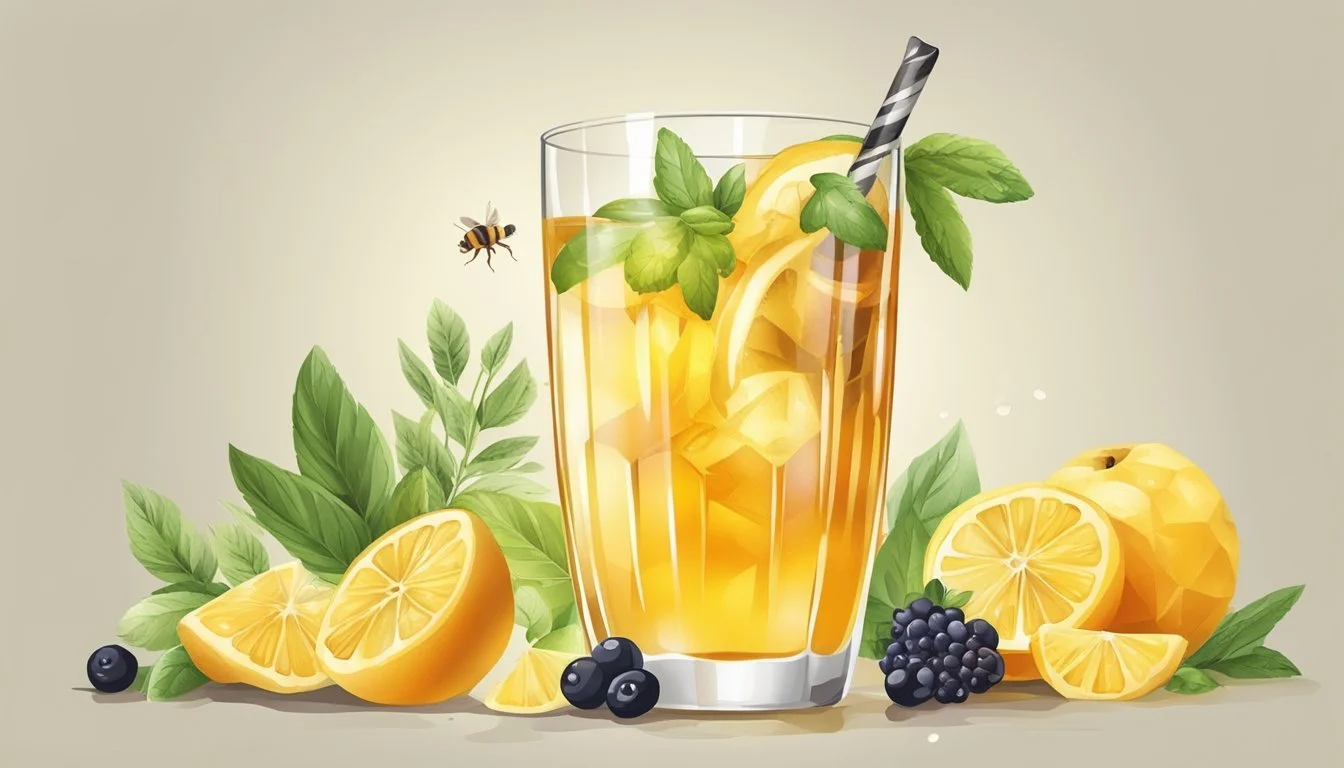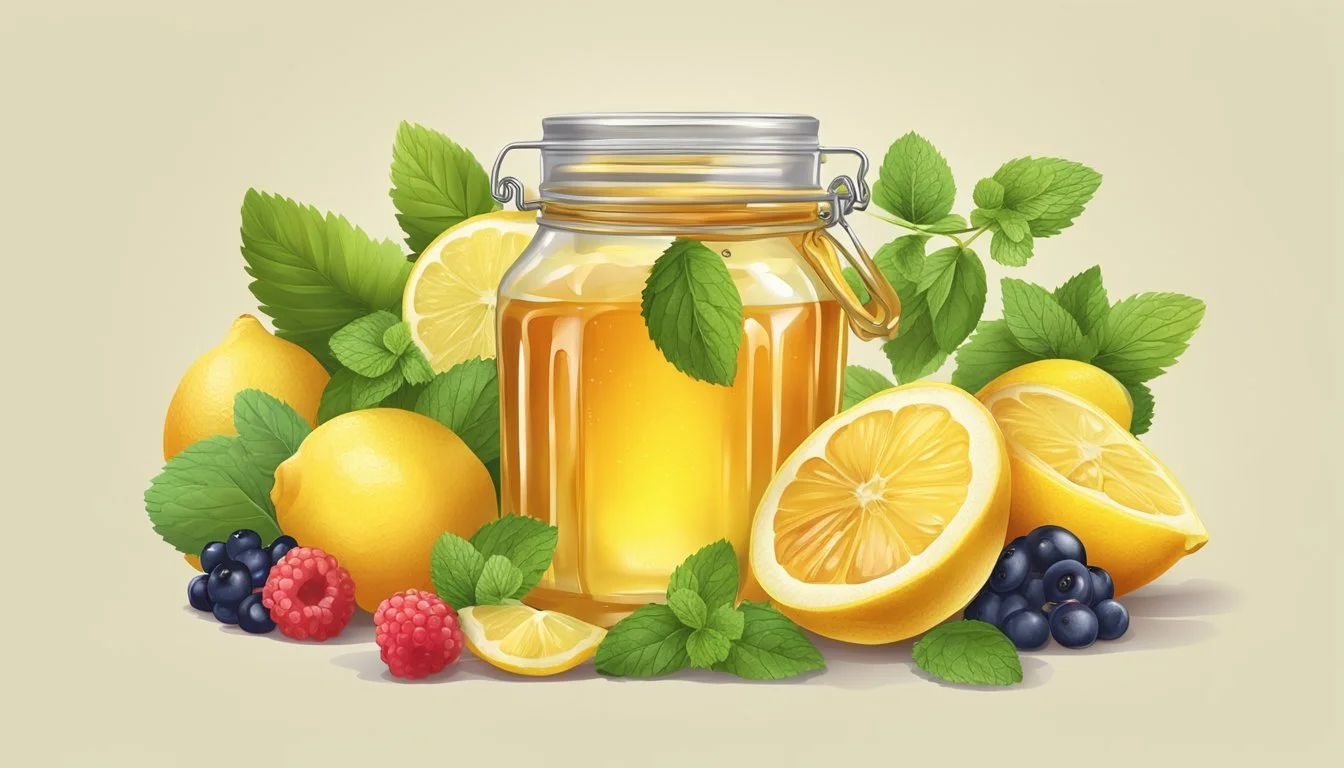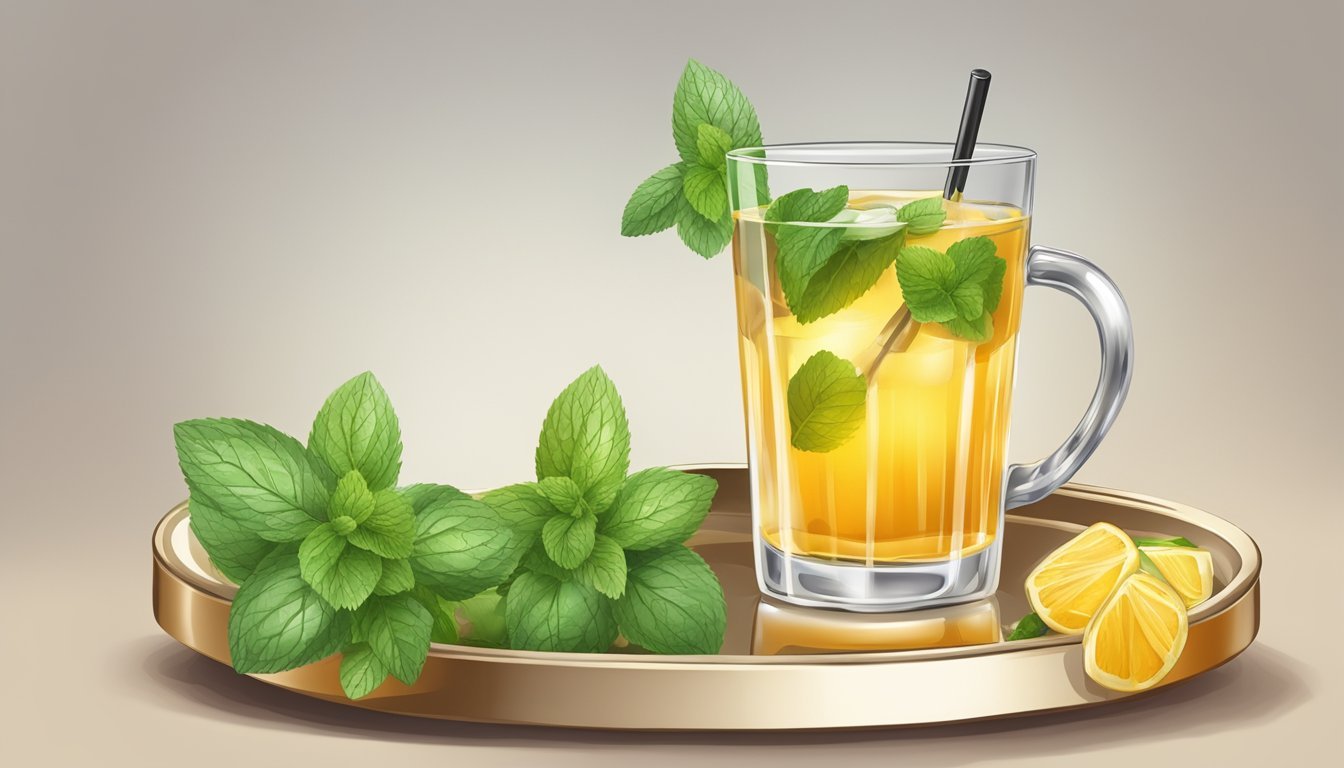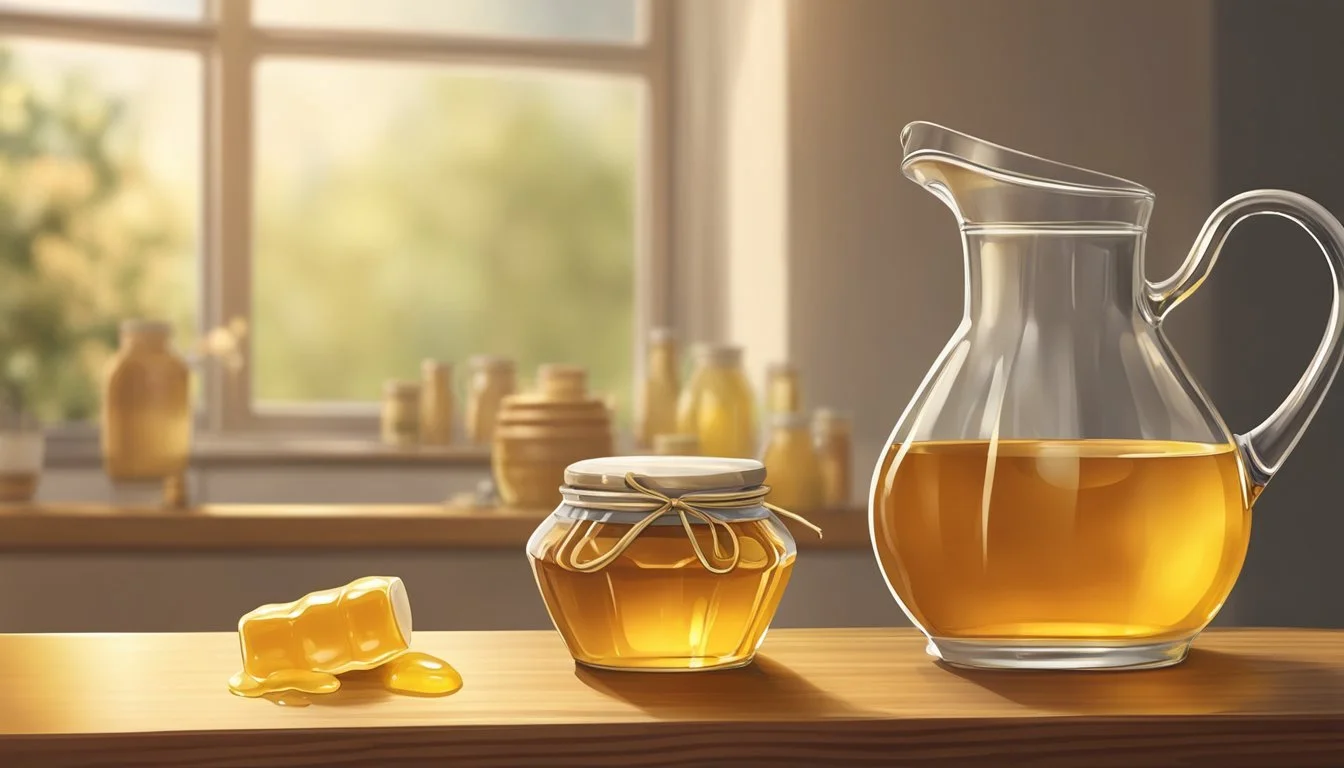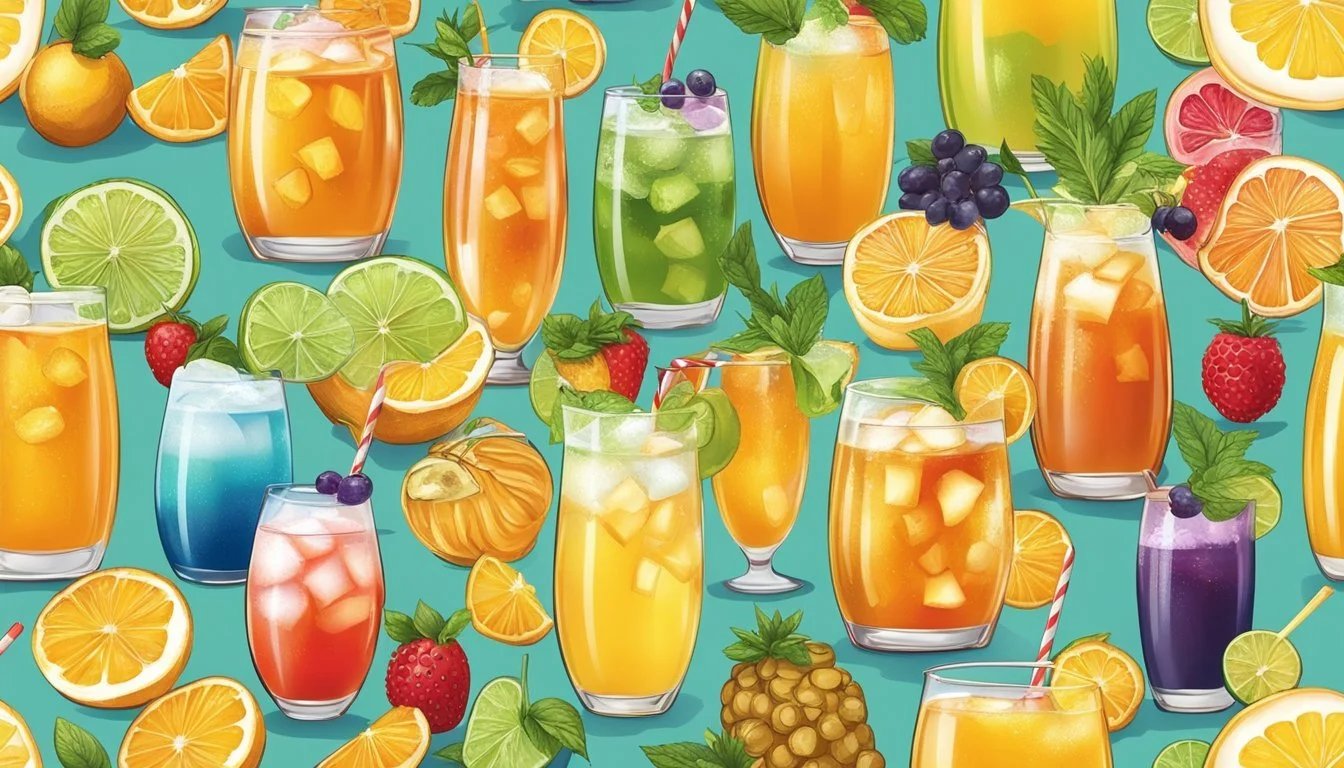The Use of Honey in Non-Alcoholic Beverages and Mocktails
Sweetening Your Sips Naturally
In the world of non-alcoholic beverages, the appeal of mocktails has surged as consumers increasingly seek out indulgent yet alcohol-free alternatives. These crafted drinks emulate the complexity and nuance of their alcoholic counterparts, often employing an array of fresh ingredients, herbs, and sweeteners. Honey (What wine goes well with honey?) has emerged as a distinguished ingredient in this sector, offering a natural sweetness that enhances flavors and imparts a unique profile to non-alcoholic concoctions.
The incorporation of honey into mocktails is not merely for sweetness; it also contributes to the drink's texture and depth. Honey pairs exceptionally well with a variety of other ingredients, including herbs like sage and mint, as well as citrus fruits, which are staples in the mocktail repertoire. As a versatile sweetener, honey is utilized in different forms—from raw and unprocessed to subtly flavored varieties—each bringing its characteristic essence to the beverage.
Equally valued for its health benefits, honey elevates non-alcoholic beverages beyond mere pleasure, suggesting a touch of wellness in every sip. It acts as a natural preservative and has been linked to immunity-boosting properties, making honey-inclusive mocktails a preferred choice for health-conscious individuals. As the market for non-alcoholic drinks continues to expand, honey shows promise in distinguishing itself as a key component in the evolving art of mocktail mixology.
The Role of Honey in Beverage Flavoring
Honey is renowned for its ability to impart natural sweetness and a nuanced taste profile to non-alcoholic beverages and mocktails. It offers a healthier alternative to refined sugars and synthesizes well with a variety of ingredients to enhance the flavor of drinks.
Natural Sweetness and Complexity
Honey's role in non-alcoholic beverage flavoring is multifaceted. It provides a rich sweetness that is more complex than that of plain sugar. This complexity derives from the distinctive flavors of the flowers from which the bees gather nectar, yielding variations that range from fruity to spicy or woody notes. In crafting mocktails, honey acts as a sweetening agent, and its viscosity contributes to a more substantial mouthfeel, making beverages both refreshing and delicious.
Flavor Pairing:
Citrus: Honey complements the tartness of citrus fruits, creating a balanced flavor profile.
Herbs: When infused with herbs like rosemary or sage, honey adds depth to the beverage's taste.
Spices: Honey harmonizes with spices such as cinnamon or jalapeño, enhancing the drink's warmth and zest.
The versatility of honey allows it to blend seamlessly into diverse types of beverages, from a simple honey-sweetened lemonade to sophisticated mocktails that require a syrup.
Health Benefits of Honey
Aside from the taste benefits, honey brings certain health advantages to beverages. As a natural source of antioxidants, it can contribute to the body's defense against oxidative stress. The soothing properties of honey make it a go-to ingredient for drinks that aim to calm the throat or provide a sense of comfort.
Health Attributes:
Antioxidants Nutritional Benefit Soothing Quality Present in honey, help combat free radicals Contains trace vitamins and minerals Known for its throat-soothing effects
While honey adds a touch of sweetness, it should be enjoyed in moderation due to its calorie content. However, its use in mocktails often allows for a more controlled and tailored sweetening process, as opposed to pre-sweetened beverages. This not only caters to flavor preferences but also can align with a health-conscious approach to dietary choices.
Essential Ingredients for Non-Alcoholic Beverages
Non-alcoholic beverages and mocktails turn ordinary ingredients into exceptional, flavorful drinks. Optimal selection of bases, enhancers like citrus and herbs, and the quality of ice play a pivotal role in crafting a refreshing experience.
Common Bases and Their Uses
The foundation of any non-alcoholic beverage or mocktail is its base, providing the primary flavor and body to the drink. Typical bases include:
Fruit Juices: Offer natural sweetness and flavor; orange and cranberry are popular for their vibrant colors and taste.
Tea: Both black and herbal teas serve as aromatic and nuanced bases.
Lemonade: A classic sweet and tart component that is universally refreshing.
Seltzer, Tonic Water, and Sparkling Water: These carbonated waters add a fizzy texture, with tonic water contributing a slightly bitter edge.
Enhancing Flavors with Citrus and Herbs
Citrus and herbs are essential for adding depth and complexity to non-alcoholic beverages:
Citrus: Lemon and orange juices are not just flavor agents but also act as natural preservatives. Their zesty profile cuts through sweetness and provides balance.
Herbs: Mint, rosemary, and thyme introduce a fresh and aromatic twist, often muddled or used as garnish to release their essential oils.
Importance of Quality Ice
Ice is not just a chilling agent; it affects the texture and dilution rate of a drink.
Cubes: Standard for most beverages, ensuring an even dilution.
Crushed Ice: Creates a slushy texture, ideal for frozen mocktails.
Large Blocks: Melt slower, ideal for drinks that benefit from minimal dilution.
Each component in a non-alcoholic beverage should be chosen with care, understanding that the quality and interaction of ingredients define the drink's character.
Non-Alcoholic Beverages and Mocktails Crafting Techniques
Crafting exquisite non-alcoholic beverages and mocktails involves meticulous techniques that expertly extract flavors and blend ingredients to mimic the complexity of their alcoholic counterparts.
Muddling for Flavor Extraction
Muddling is a method crucial in non-alcoholic beverage preparation, where a muddler is used to press ingredients against the glass. They focus on extracting essential oils and flavors, especially from items like mint leaves and fruits. For instance, gently muddling fresh mint can release its aromatic properties into a mocktail, adding a depth of flavor that complements honey's natural sweetness without overpowering it.
Proper Technique: Use a gentle pressing motion rather than grinding to avoid bitterness.
Tools Needed: A sturdy, non-abrasive muddler.
Ideal Ingredients: Herbs (e.g., mint), fruits, and spices.
Mixing and Shaking Methods
Mixing and shaking are pivotal for achieving a harmonious blend of flavors and an ideal texture in mocktails. Shaking with ice in a cocktail shaker is not just about chilling the drink; it also creates a certain frothiness and dilution, reflecting the characteristics one would expect from a traditional cocktail.
Stirring: Recommended for delicate flavors or when clarity in the drink is desired.
Shaking: Best for combining ingredients with different densities and enhancing the overall mouthfeel.
Shaking not only integrates honey seamlessly into the mix but also aerates the beverage, while stirring is suitable for recipes where a smoother, clearer appearance is preferred. Both methods are essential in non-alcoholic recipes to emulate the sensation of a balanced, spirit-based drink.
Recipes for Popular Honey-Infused Mocktails
Honey adds a natural sweetness to mocktails that sugar alone cannot match. Here are some recipes that showcase honey's versatility in both classic and innovative non-alcoholic beverages.
Classic Honey-Infused Mocktails
Honey Citrus Fizz
A zesty and refreshing drink that combines honey simple syrup with fresh lemon juice and sparkling water. Garnish with a twist of citrus peel for an elegant touch.
Ingredients:
2 tbsp honey simple syrup
1 tbsp lemon juice
Sparkling water
Ice
Citrus peel for garnish
Instructions:
Combine honey simple syrup and lemon juice in a glass filled with ice.
Top with sparkling water and stir gently.
Garnish with a citrus peel.
Non-Alcoholic Honey Mint Julep
A sweet mocktail version of the classic mint julep, it uses a rich honey syrup to complement the muddled mint leaves.
Ingredients:
3 tbsp honey simple syrup
A handful of fresh mint leaves
Crushed ice
Sparkling water
Instructions:
Muddle mint leaves with honey simple syrup in a glass.
Fill the glass with crushed ice.
Top with sparkling water and stir until chilled.
Arnold Palmer with a Twist
A timeless combination of iced tea and lemonade is enhanced by honey, offering a smoother, more sophisticated flavor.
Ingredients:
1/2 cup iced tea
1/2 cup lemonade
1 tbsp honey
Lemon slices for garnish
Instructions:
Stir honey into lemonade until fully dissolved.
Combine with iced tea and serve over ice.
Garnish with lemon slices.
Innovative Honey Mocktail Creations
Lavender Honey Mocktail Margarita
This inventive mocktail introduces the floral notes of lavender simple syrup paired with honey for a unique twist on the classic margarita.
Ingredients:
2 tbsp lavender simple syrup
1 tbsp honey
3 tbsp lime juice
Salt for rim
Ice
Instructions:
Mix lavender simple syrup, honey, and lime juice until the honey is dissolved.
Rim a glass with salt and fill with ice.
Pour the mixture into the glass and serve immediately.
Virgin Piña Colada with Honey Drizzle
Adding honey to a non-alcoholic version of this tropical staple creates a deeper sweetness that complements the coconut and pineapple flavors.
Ingredients:
1/2 cup pineapple juice
1/4 cup coconut milk
1 tsp honey, plus more for drizzle
Pineapple slices for garnish
Shredded coconut for garnish
Ice
Instructions:
Blend pineapple juice, coconut milk, honey, and ice until smooth.
Pour into a glass, drizzle with additional honey, and garnish with pineapple and coconut.
Shirley Temple Blackberry Honey Twist
Adding honey and muddled blackberries to this classic children’s cocktail creates a more complex, adult version with a vibrant color and a hint of sweet and sour.
Ingredients:
6-8 fresh blackberries
1 tbsp honey
Grenadine
Ice
Instructions:
Muddle blackberries with honey in a glass.
Fill the glass with ice, add a splash of grenadine, and top with ginger ale.
Stir gently before serving.
These recipes offer a spectrum of flavors, from the comforting familiarity of honey-mint combinations to the innovative flair of lavender and blackberry infusions, proving that mocktails can be just as sophisticated and delightful as their alcoholic counterparts.
Crafting Your Own Honey Mocktail Recipes
When creating honey-based mocktail recipes, it's essential to strike a balance between the honey's natural sweetness and the desired tangy flavors, as well as to garnish thoughtfully for an appealing touch that enhances the drink's taste.
Balancing Sweetness and Tang
To achieve a harmonious flavor profile in honey mocktails, one must carefully balance the sweetness of honey with tangy elements. Typically, honey can be a substitute for sugar or agave syrup due to its rich, nuanced sweetness and healthful properties. When using honey, it's important to consider its flavor intensity compared to other sweeteners. For instance, one might start with a lesser amount than what a recipe with sugar would suggest, and adjust to taste from there.
Honey to Citrus Ratio: A good starting point could be a 1:2 ratio of honey to citrus juice, such as lemon or orange juice, providing a refreshing zing to the beverage.
Taste Testing: Continuous taste testing is crucial—add more honey for sweetness or more citrus juice for a tangier kick until the desired balance is achieved.
Garnishing for Visual Appeal and Flavor
Garnishes are more than just decorative; they're an integral part of the mocktail experience. They can provide a pop of color, a hint of flavor, or an aromatic accent that complements the honey's natural bouquet.
Herbs: Incorporating herbs like rosemary can add a sophisticated twist. One can use a sprig of rosemary as a stirrer, infusing the mocktail with its aroma.
Fruits and Berries: Fresh blackberries or a twist of citrus peel not only make the drink more visually enticing but also complement the honey with contrasting flavors and textures.
To craft a delicious and refreshing honey mocktail, mixologists need to be thoughtful about the balance of flavors and the creative use of garnishes which serve to enhance both the appearance and the taste of the beverage.
Serving and Presentation Tips
Proper serving and presentation can transform the simple act of consuming a non-alcoholic beverage or mocktail into a memorable experience. The choice of glassware and the attention to aesthetic details can significantly elevate the drink's appeal.
Choosing the Right Glassware
Selecting the appropriate glassware is crucial for both the aesthetics and functionality of serving honey-infused mocktails. A highball glass or Collins glass is ideal for taller drinks, allowing space for ice cubes and carbonated mixers, enhancing the visual layering effect. A rocks glass suits shorter, more potent mocktails with honey and fresh ginger, allowing the aromas to concentrate and intensify the tasting experience.
Highball Glass: Recommended for drinks that are lengthened with soda or tonic, such as a honey-lemon-ginger fizz.
Collins Glass: Taller than the highball glass, perfect for layered mocktails that showcase the viscosity of honey.
Rocks Glass: Best for 'on the rocks' mocktails where honey is a key sweetener, providing a sturdy base for muddling ingredients.
Final Touches and Aesthetic Considerations
Presentation is not just about the taste, but the visual appeal and aromatic garnish. The judicious use of ice cubes can prevent dilution while maintaining the mocktail's chilled temperature. Garnishes such as a sprig of mint or a thinly sliced wheel of fresh ginger not only add visual flair but also contribute to the overall flavor profile and aromatic experience. Here are some specific tips:
Ice: Choose cube or crushed ice based on whether the mocktail should be sipped slowly or consumed quickly.
Garnish:
Mint Leaves: A fresh garnish for a visually appealing drink and to add a refreshing aroma.
Fresh Ginger: A thin slice can be used as an edge decoration or a stirrer to infuse subtle spice.
Carefully layering the mocktail's components, taking into consideration the density of honey, and meticulously placing the garnish can result in a beverage that entices both the palate and the eyes.
Understanding Non-Alcoholic Beverage Terminology
When exploring the world of non-alcoholic beverages and mocktails, it is essential to grasp the specific terminology used in this domain to fully appreciate the nuances of these drinks.
Differences Between Mocktails and Virgin Drinks
Mocktails are non-alcoholic versions of traditional cocktails, where the alcohol is omitted or replaced with other ingredients to mimic the flavor and appearance of the original. Virgin Drinks, on the other hand, are typically simpler forms of mocktails, often referring to non-alcoholic versions of cocktails without much alteration or additional ingredients.
Mocktails may involve:
A complex mixture of ingredients
Muddling herbs and fruits
Shaking or blending to create a unique beverage
Virgin Drinks are usually:
A straightforward substitution, leaving out alcohol
Less complex in flavor and preparation
Common Mocktail-Related Jargon
Understanding mocktail-related jargon is crucial for appreciating and crafting non-alcoholic beverages. Here are key terms often used in the world of mocktails:
Muddle: To press ingredients against the side of the glass to release flavors.
Shake: To vigorously mix ingredients, usually in a shaker, to blend flavors and chill the drink.
Non-alcoholic: Beverages containing no alcohol. For legal and industry standards, this can sometimes mean containing less than 0.5% alcohol by volume.
Complexity: Refers to the depth and variety of flavors in a beverage. In mocktails, complexity is achieved through the combination of ingredients, layering tastes, and sometimes the method of preparation.
Catering to Diverse Preferences and Needs
Innovation in non-alcoholic beverages, particularly mocktails, has enabled caterers and drink makers to serve an array of alternative drinks that are both inclusive and appealing. These bespoke beverages not only satisfy various dietary restrictions and health considerations but also enhance the celebration experience for all guests.
Mocktails for Health-Conscious Individuals
Mocktails have evolved to cater to health-conscious individuals, focusing on low-sodium and antioxidant-rich ingredients. Honey, for instance, serves as a natural sweetener, adding a layer of richness and depth to beverages without the artificial additives found in traditional syrups. Its inclusion allows for a more nuanced flavor profile that can be tailored to specific dietary preferences. Those seeking alcohol-free options can indulge in complex and crafted drinks that don't compromise on taste. For instance, a Honey and Ginger Spritz combines the natural sweetness of honey with the zing of ginger, both noted for their health benefits, to create a refreshing, low-calorie option.
Non-Alcoholic Options for Special Occasions
Special occasions such as parties and celebrations often leave non-drinkers with limited choices. Non-alcoholic options infused with honey offer a sophisticated alternative that can be enjoyed by all, including pregnant women or designated drivers. Craft mocktails made with honey tap into the need for inclusive drinking experiences, allowing everyone to partake in the toast. An elegant Honey-Infused Berry Fizz can become a centerpiece at these events, offering a vibrant mix of seasonal berries, a splash of soda, and a generous drizzle of honey, satisfying the sweet tooth and providing a visually-stunning, alcohol-free beverage option.

